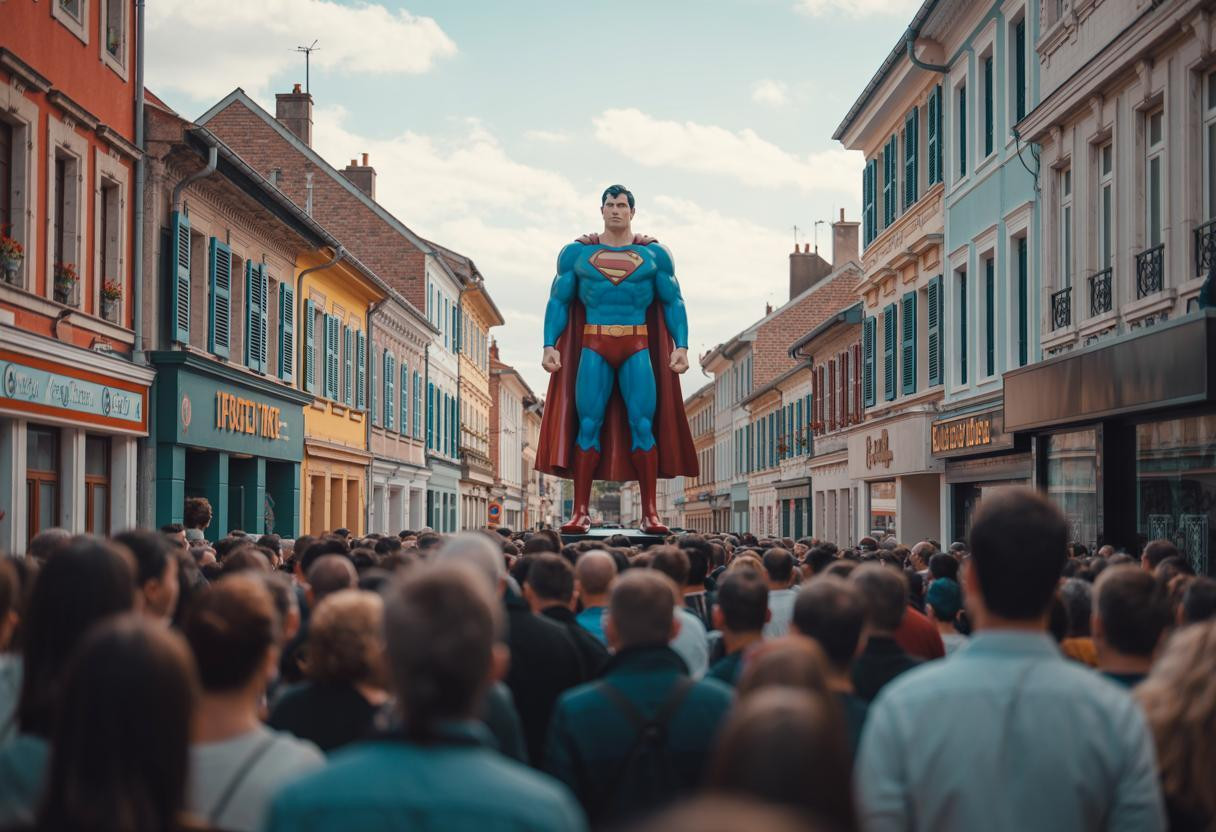When Metropolis, Illinois, decided to rebrand itself as Superman’s hometown in 1972, few could have predicted that this small rural town would become a case study in how pop culture can resurrect dying communities. The annual Superman Celebration now draws 20,000-25,000 visitors each June, transforming a struggling Midwest town into a thriving tourist destination that generates millions in economic impact.
This extraordinary transformation offers valuable lessons for communities worldwide facing economic decline, while also revealing the complex challenges of building an identity around borrowed cultural assets.
How a fictional character saved a real town
Metropolis faced the same crisis plaguing countless American small towns in the 1970s: declining industries, shrinking populations, and vanishing economic opportunities. The town’s decision to embrace Superman wasn’t just creative marketing—it was economic survival.
The strategy worked remarkably well. The Super Museum, operating since 1993 with over 70,000 Superman collectibles, provides year-round employment and attracts steady tourism revenue. The annual celebration has grown from a single-day local event in 1979 to a four-day festival featuring celebrity guests, comic artists, and extensive programming.
However, this success story contains a crucial lesson about dependency. When communities need transformation strategies that create dramatic results, they must consider long-term sustainability alongside immediate impact.
The hidden costs of cultural appropriation
Metropolis’s Superman identity creates a fascinating paradox: the town’s greatest strength is also its greatest vulnerability. DC Comics retains complete trademark control over Superman, meaning local authorities must navigate corporate approval for major branding decisions.
Economic fragility beneath the success
The celebration’s economic impact remains heavily concentrated during the June event, leaving local businesses with seasonal dependency that mirrors the feast-or-famine cycles many rural communities face. A failed $50 million theme park project in the 1970s demonstrates how ambitious infrastructure investments can collapse when based on external intellectual property.
Identity tensions and community dynamics
Long-time residents remember pre-Superman Metropolis, creating generational divides about the town’s “authentic” identity. Younger residents embrace Superman as intrinsic to their community, while older cohorts sometimes feel their local heritage has been overshadowed by manufactured tourism appeal.
This reflects a broader challenge communities face when embracing authentic identity over hiding behind generic development strategies.
Strategic lessons for struggling communities
The most surprising insight from Metropolis’s success isn’t the economic impact—it’s how the town balanced borrowed identity with existing assets. Rather than completely abandoning their Ohio River heritage and regional history, they created a hybrid approach that honors both Superman lore and local culture.
Diversification as survival strategy
Smart communities avoid single-attraction dependency by building multiple revenue streams. Metropolis combines the Super Museum, annual celebration, Route 66 tourism connections, and local historical attractions to create a more resilient economic foundation.
Corporate partnership navigation
Working with major IP holders like DC Comics provides credibility and celebrity access, but requires careful legal navigation. Communities must negotiate partnerships that preserve local autonomy while leveraging corporate resources.
Replication potential and adaptation strategies
Other communities can apply Metropolis’s model, but success requires careful IP selection and community alignment. The key is finding cultural assets that resonate emotionally with local residents while attracting external interest.
Towns attempting similar transformations need strategic planning approaches that balance tourism development with community needs, ensuring residents benefit from economic growth rather than being displaced by it.
The sustainable future of cultural tourism
Metropolis’s 46-year success story proves that pop culture tourism can create lasting economic impact when managed thoughtfully. However, the town’s future depends on diversifying beyond Superman while maintaining the authentic community character that makes the celebration special.
For communities facing economic challenges, Metropolis demonstrates that creative branding can work—but only when it enhances rather than replaces genuine local identity and involves residents as active participants in their town’s transformation.
